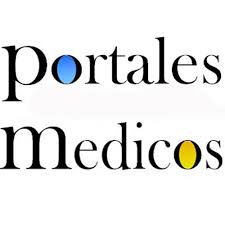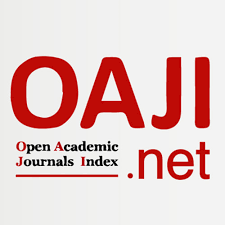Un estudio comparativo del efecto de la administración intravenosa de ketorolaco y paracetamol sobre el alivio del dolor después de la cirugía de uvulopalatofaringoplastia
Resumen
DOI: https://doi.org/10.53766/AcBio/2025.15.29.10
Introducción: La apnea obstructiva del sueño (AOS) es un trastorno prevalente y la uvulopalatofaringoplastia (UPPP) es una intervención quirúrgica común. El manejo eficaz del dolor postoperatorio es crucial para estos pacientes, pero minimizar la sedación es esencial para evitar exacerbar la AOS. Material y métodos: Este estudio comparó la eficacia y los efectos secundarios del ketorolaco y el paracetamol intravenosos para el tratamiento del dolor después de UPPP en 60 pacientes. Los pacientes fueron asignados aleatoriamente para recibir ketorolaco (0,5 mg/kg) o acetaminofén (15 mg/kg) 30 minutos antes del final de la cirugía y a intervalos regulares después de la operación. Las puntuaciones de dolor (EVA), los parámetros hemodinámicos, las puntuaciones de la prueba de deglución de agua (SWT) y los efectos secundarios se evaluaron en varios momentos. Resultados: Los resultados no mostraron diferencias significativas en las variables demográficas o parámetros hemodinámicos entre los grupos. El ketorolaco proporcionó un control del dolor significativamente mejor a las 12, 24 y 48 horas después de la operación. La incidencia de efectos secundarios, como náuseas, vómitos y erupción cutánea, fue similar entre los grupos. Los mareos fueron significativamente mayores en el grupo de acetaminofén a las 24 horas del postoperatorio. Conclusión: Este estudio sugiere que el ketorolaco intravenoso proporciona un alivio del dolor superior en comparación con el paracetamol después de la UPPP, sin aumentar el riesgo de efectos secundarios significativos. Este hallazgo puede guiar a los médicos a optimizar el manejo del dolor posoperatorio en pacientes con AOS sometidos a cirugía UPPP.
Recibido: 12/08/2024
Aceptado: 06/09/2024
Palabras clave
Texto completo:
PDF (English)Referencias
Abbasi, A., et al., A comprehensive review of obstructive sleep apnea. Sleep Sci, 2021. 14(2): p. 142-154.
Franklin, K.A. and E. Lindberg, Obstructive sleep apnea is a common disorder in the population—a review on the epidemiology of sleep apnea. Journal of Thoracic Disease, 2015. 7(8): p. 1311-1322.
Osman, A.M., et al., Obstructive sleep apnea: current perspectives. Nat Sci Sleep, 2018. 10: p. 21-34.
Caples, S.M., et al., Surgical modifications of the upper airway for obstructive sleep apnea in adults: a systematic review and meta-analysis. Sleep, 2010. 33(10): p. 1396-407.
MacKay, S.G., et al., Surgical management of obstructive sleep apnoea: A position statement of the Australasian Sleep Association(). 2020. 25(12): p. 1292-1308.
Lüer-Groel, B., N. Stasche, and M. Bärmann, [Perioperative risk management of patients with obstructive sleep apnea]. Hno, 2012. 60(4): p. 313-7.
Shehan, J.N., E. Du, and M.B. Cohen, Robot-assisted epiglottopexy as a method for managing adult obstructive sleep apnea. Am J Otolaryngol, 2020. 41(6): p. 102742.
Ghadiri, M. and R.R. Grunstein, Clinical side effects of continuous positive airway pressure in patients with obstructive sleep apnoea. Respirology, 2020. 25(6): p. 593-602.
Chunduri, A. and A.K. Aggarwal, Multimodal Pain Management in Orthopedic Surgery. 2022. 11(21).
Jain, Y., et al., Evaluation of Different Approaches for Pain Management in Postoperative General Surgery Patients: A Comprehensive Review. Cureus, 2023. 15(11): p. e48573.
Garimella, V. and C. Cellini, Postoperative pain control. Clin Colon Rectal Surg, 2013. 26(3): p. 191-6.
Pirie, K., et al., Current approaches to acute postoperative pain management after major abdominal surgery: a narrative review and future directions. British Journal of Anaesthesia, 2022. 129(3): p. 378-393.
Kokki, H., et al., Pain intensity after laseruvulopalatoplasty and tonsillectomy. Otolaryngology—Head and Neck Surgery, 2003. 128(2): p. 273-279.
Shankariah, M., M. Mishra, and R.A. Kamath, Tramadol versus ketorolac in the treatment of postoperative pain following maxillofacial surgery. J Maxillofac Oral Surg, 2012. 11(3): p. 264-70.
Catapano, M.S., The analgesic efficacy of ketorolac for acute pain. The Journal of Emergency Medicine, 1996. 14(1): p. 67-75.
Isiordia-Espinoza, M.A., et al., Postoperative administration of ketorolac compared to other drugs for pain control after third molar surgery: A meta-analysis of double-blind, randomized, clinical trials. British Journal of Clinical Pharmacology, 2022. 88(6): p. 2591-2604.
Carney, D.E., et al., Ketorolac reduces postoperative narcotic requirements. Journal of pediatric surgery, 2001. 36(1): p. 76-79.
Patrocínio, L.G., et al., A comparative study between ketorolac and ketoprofen in postoperative pain after uvulopalatopharyngoplasty. Braz J Otorhinolaryngol, 2007. 73(3): p. 339-42.
Watcha, M.F., et al., Perioperative effects of oral ketorolac and acetaminophen in children undergoing bilateral myringotomy. Can J Anaesth, 1992. 39(7): p. 649-54.
Javaherforooshzadeh, F., et al., Comparing the effects of ketorolac and Paracetamol on postoperative pain relief after coronary artery bypass graft surgery. A randomized clinical trial. J Cardiothorac Surg, 2020. 15(1): p. 80.
Amini, S.M., et al., Assessing the effectiveness of ketorolac in pain management of traumatic injuries in prehospital emergency care services. Journal of Emergency Practice and Trauma, 2022. 8(1): p. 8-12.
Forrest, J.B., E.L. Heitlinger, and S. Revell, Ketorolac for postoperative pain management in children. Drug Saf, 1997. 16(5): p. 309-29.
Turtle, E.J., J.W. Dear, and D.J. Webb, A systematic review of the effect of paracetamol on blood pressure in hypertensive and non-hypertensive subjects. Br J Clin Pharmacol, 2013. 75(6): p. 1396-405.
Imamura, H., et al., Evaluating the effects of diclofenac sodium and etodolac on renal hemodynamics with contrast-enhanced ultrasonography: a pilot study. Eur J Clin Pharmacol, 2013. 69(2): p. 161-5.
Pareek, A., et al., Comparative evaluation of efficacy and safety of etodolac and diclofenac sodium injection in patients with postoperative orthopedic pain. Curr Med Res Opin, 2011. 27(11): p. 2107-15.
Eladi, I.A., et al., Efficacy and Safety of Intravenous Ketorolac versus Nalbuphine in Relieving Postoperative Pain after Tonsillectomy in Children. Open Access Maced J Med Sci, 2019. 7(7): p. 1082-1086.
Duttchen, K.M., et al., Intraoperative ketorolac dose of 15mg versus the standard 30mg on early postoperative pain after spine surgery: A randomized, blinded, non-inferiority trial. Journal of Clinical Anesthesia, 2017. 41: p. 11-15.
Shende, D. and K. Das, Comparative effects of intravenous ketorolac and pethidine on perioperative analgesia and postoperative nausea and vomiting (PONV) for paediatric strabismus surgery. Acta Anaesthesiol Scand, 1999. 43(3): p. 265-9.
Pathi, J., K.C. Vidya, and N.C. Sangamesh, Tramadol versus ketorolac for pain management after third molar surgery. Natl J Maxillofac Surg, 2020. 11(2): p. 236-240.
DOI: https://www.doi.org/10.53766/AcBio/Se encuentra actualmente indizada en: | |||
 |  |  | |
  |  |  |  |
 |  |  |  |
 |  |  | |
![]()
Todos los documentos publicados en esta revista se distribuyen bajo una
Licencia Creative Commons Atribución -No Comercial- Compartir Igual 4.0 Internacional.
Por lo que el envío, procesamiento y publicación de artículos en la revista es totalmente gratuito.



